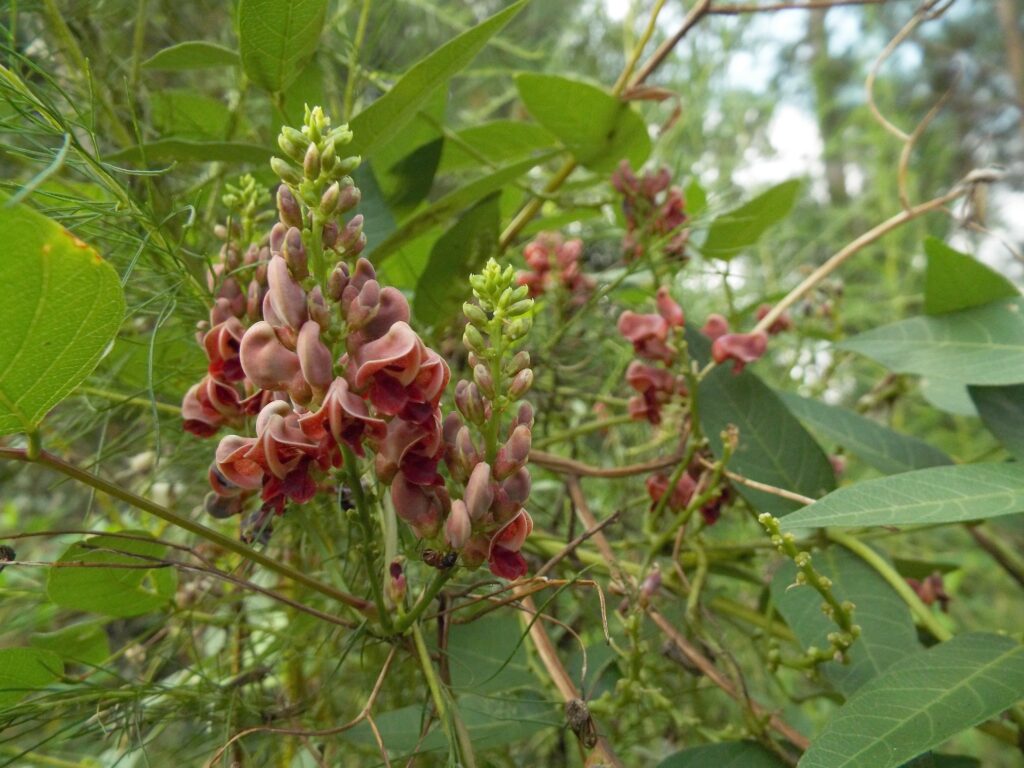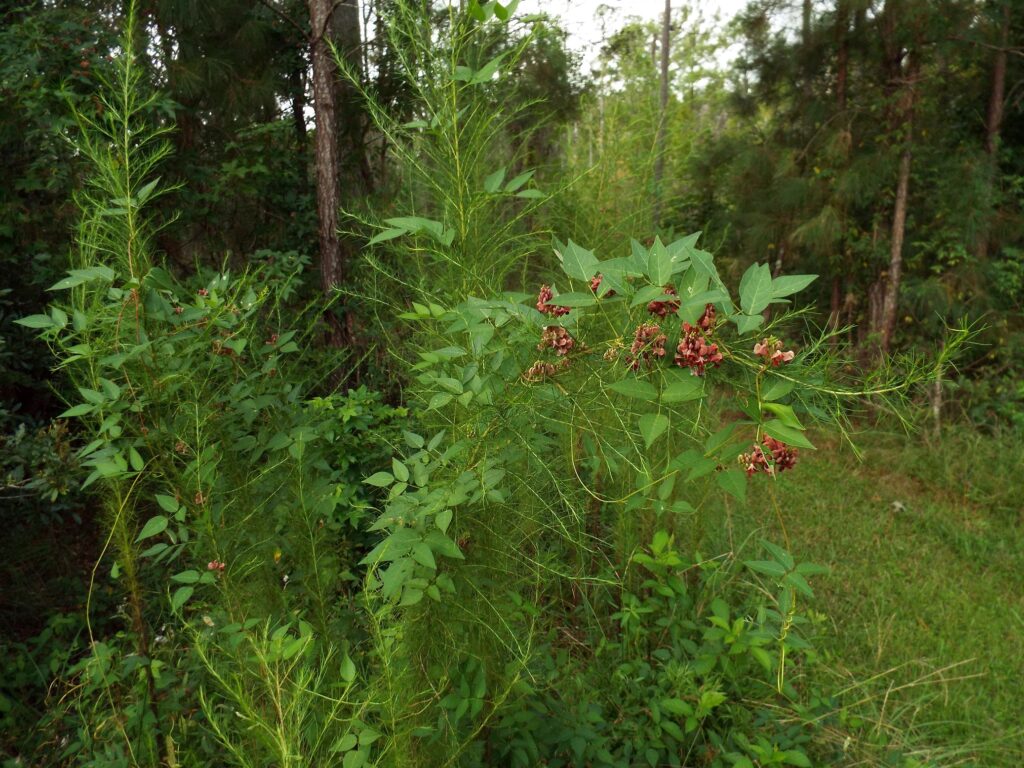


This week for Flora and Fauna Friday we have a palatable plant found in forests and fields, American Groundnut (Apios americana).
American Groundnut is a species of plant in the legume family. It’s a low growing vine that’s often found on the edges of moist fields and woodlots. It climbs by twining up grasses, shrubs, and herbaceous plants, sending out a pinnately compound leaf every few inches. The vines are thin and wiry, dying back to the roots each year. Its mauve-pink flowers clearly fit within its leguminous lineage and are presented in dense cones, spiraling upwards. The flowers are not large draws for pollinators but, like many legumes, the leaves are a favored host plant of certain butterflies. Silver-spotted Skippers lay their eggs on this vine and their red-headed, chunky green caterpillars can often be spotted pruning its vegetation throughout the summer.
Groundnut gets this portmanteau of a name from its tubers. Their tubers are about the size of a fig and found in strings beneath the soil along its subterranean stem. These underground nuggets are where the vine retreats each winter and they were a staple crop of some Native American peoples. Groundnut was grown as an undomesticated crop by Native Americans and used as an emergency food source by colonists. The tubers are very starchy and can be prepared in many of the same ways potatoes traditionally are. Apparently, they taste quite good, like a nutty potato. Although never fully domesticated by modern farmers, Groundnut has a distinct advantage as a crop in that it fixes its own nitrogen. This increases its productivity in tired soils and means it can be used as a green manure, like soybeans, peanuts, and rye.